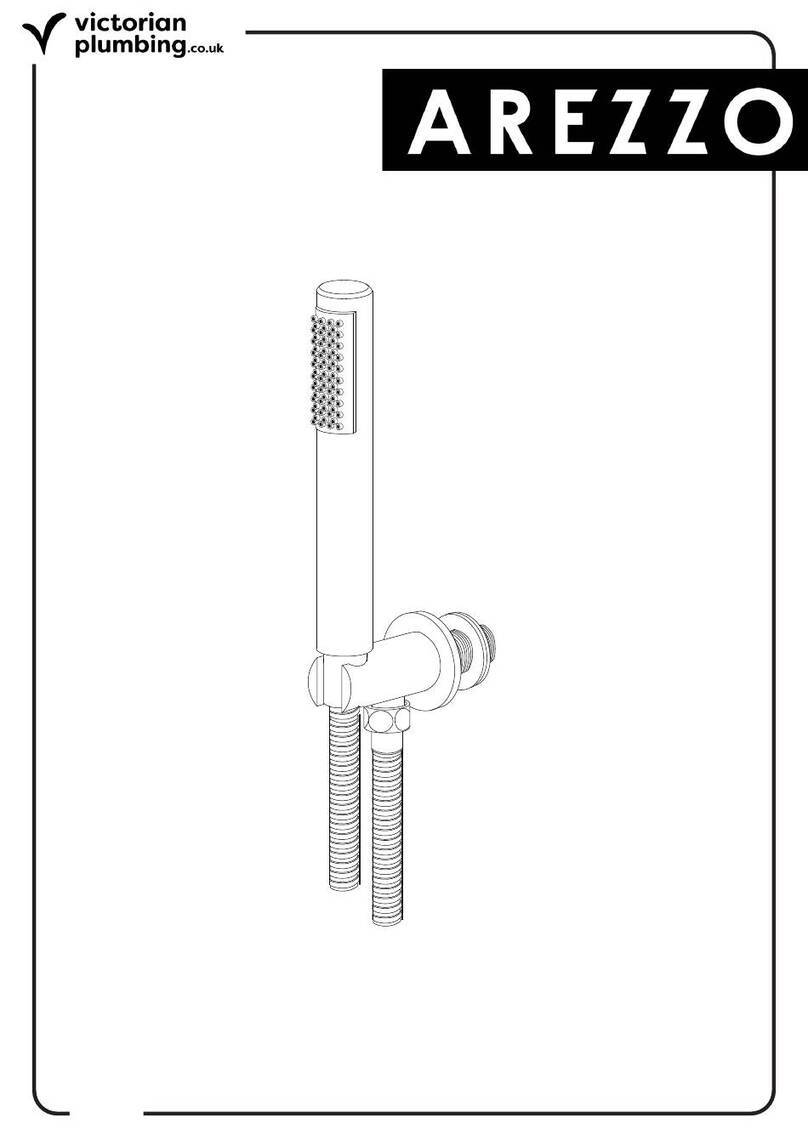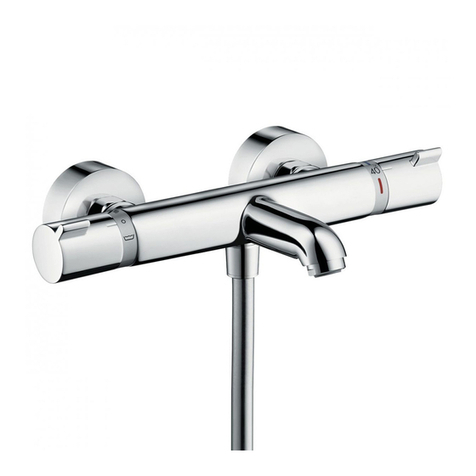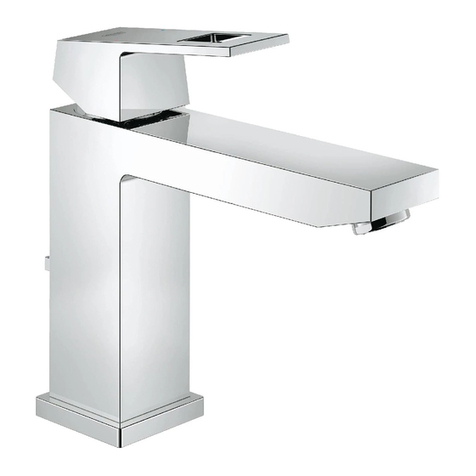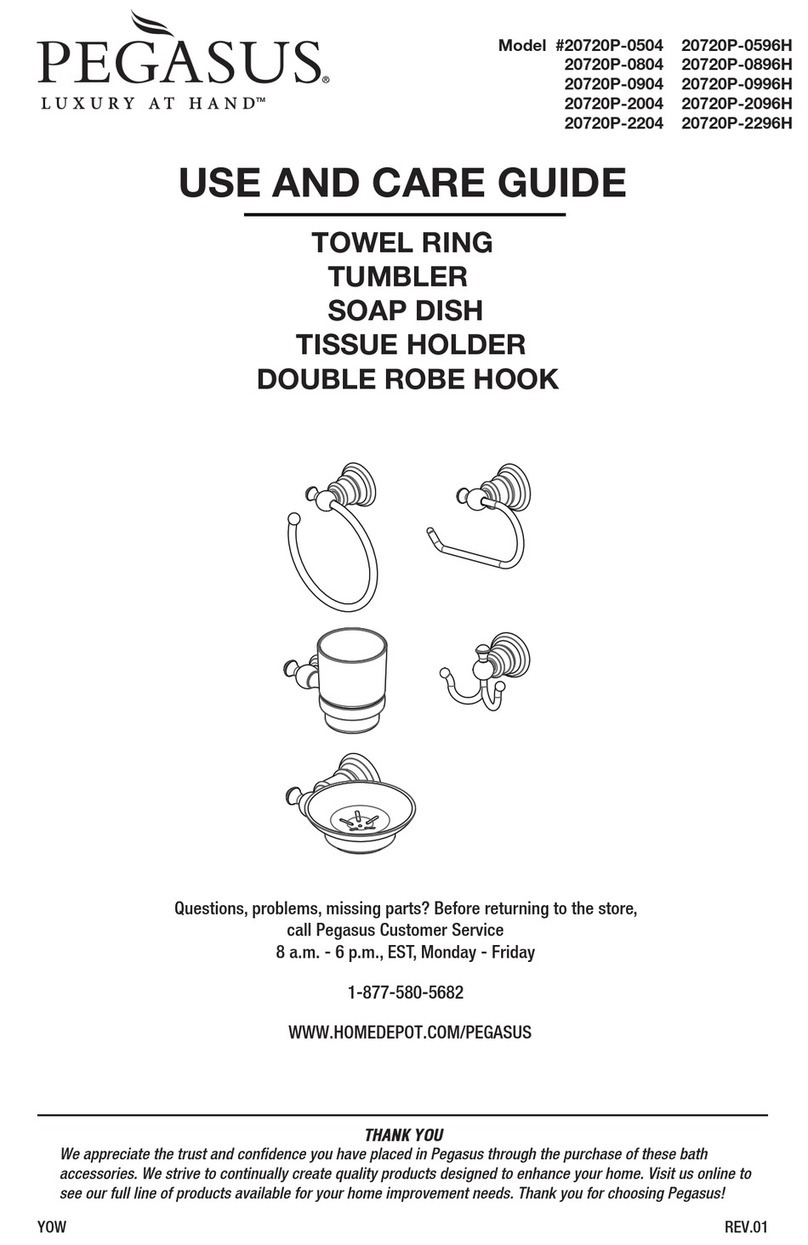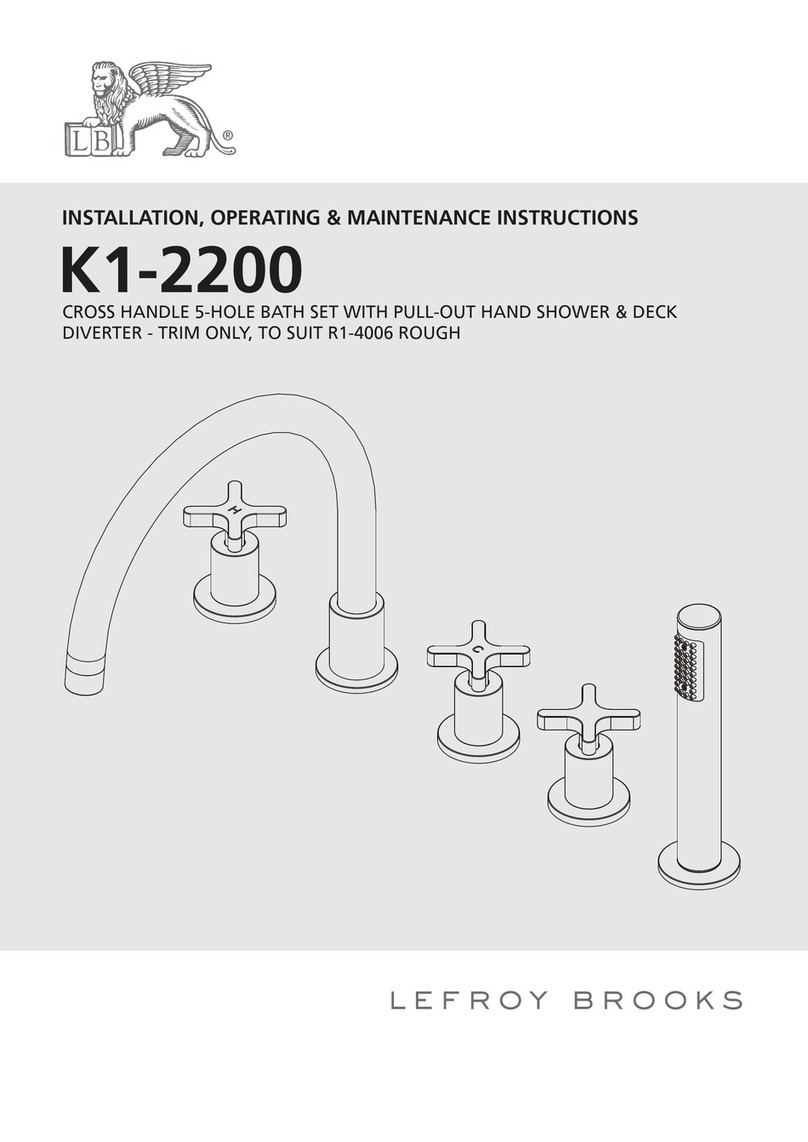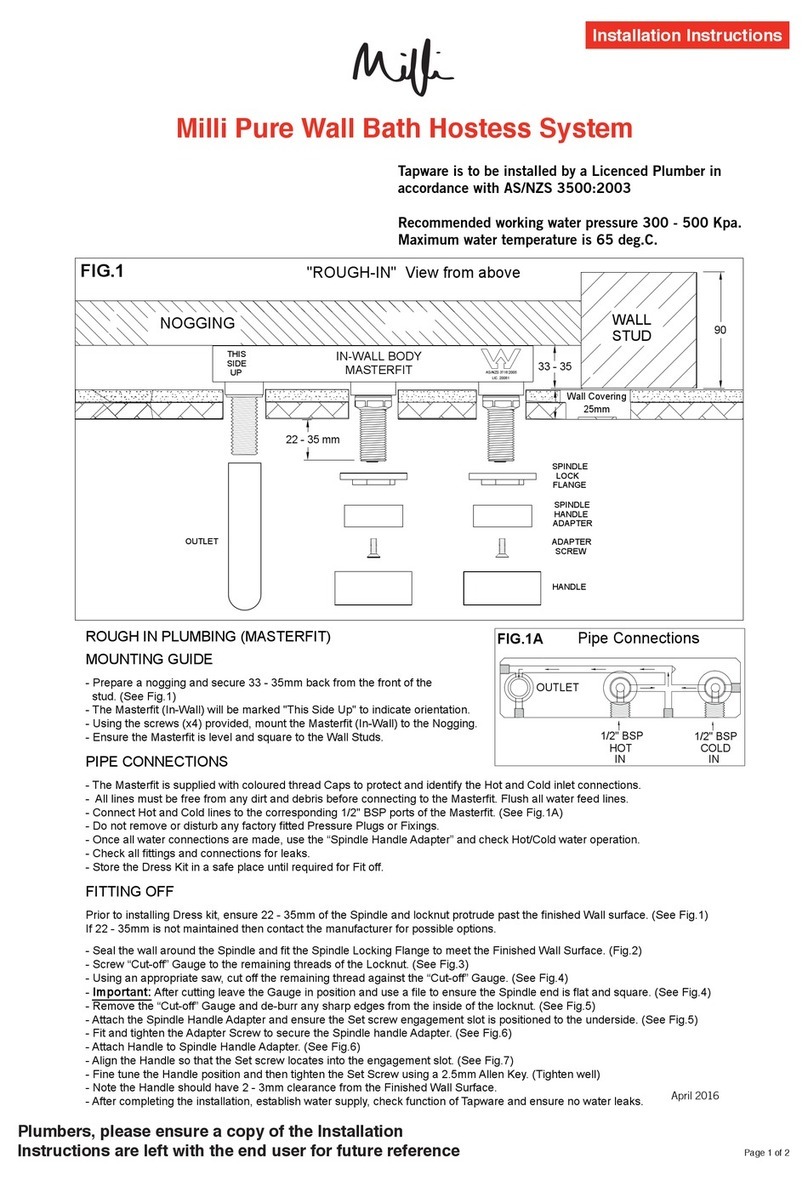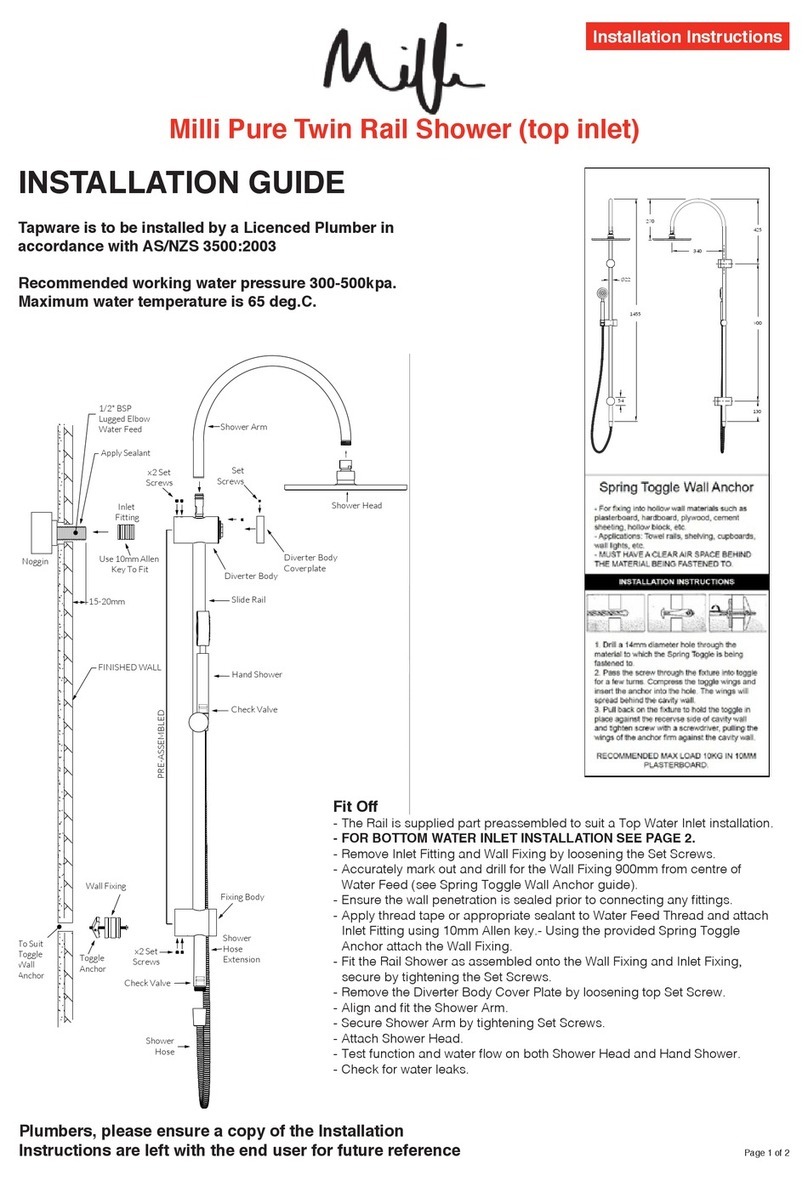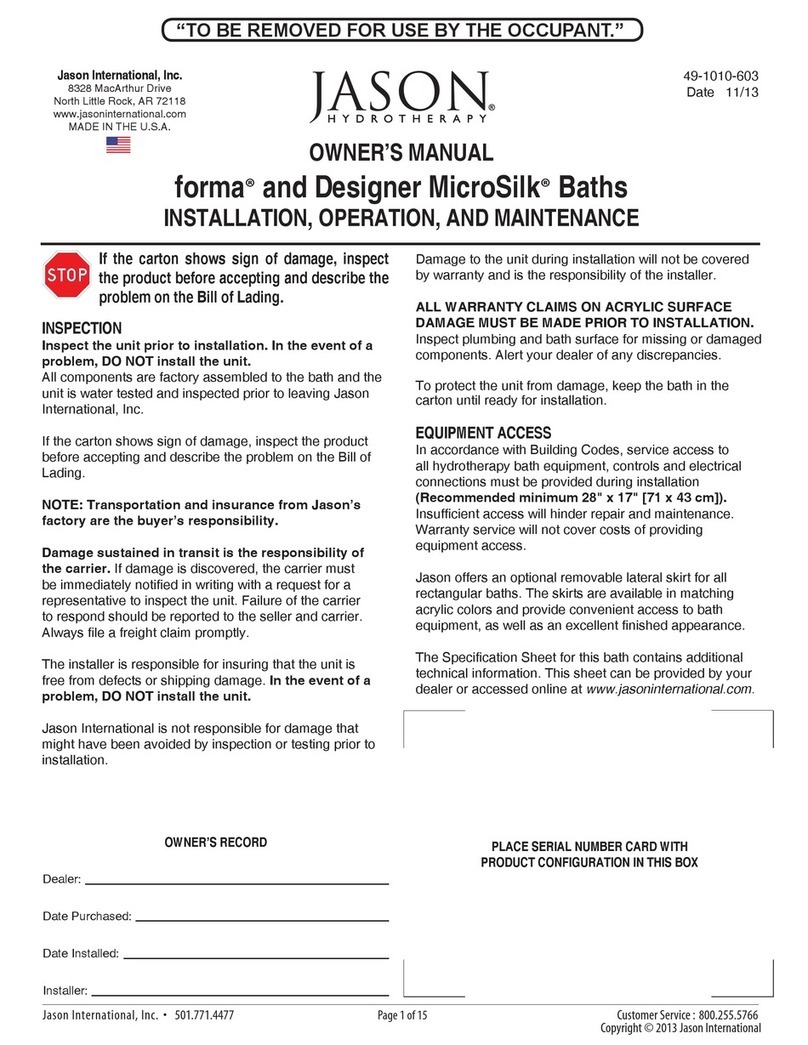
MILLI
RUSH 432, 632, 832
Electricians, please ensure a copy of the installation
instructions is left with the end user for future reference
COMPONENT LIST
1 x Black polytube 40mm
4 x Black polytube 5mm, to hold wire in masonry slot
3 x Waterproof wirenuts
2 x Large zinc plated self tapping screws, pan head 10g x 50mm
2 x Stainless steel grub screws, 4g x 1/4” countersunk head
2 x Plastic rawl plugs, for installation on masonry walls
2 x Black rectangular polycarbonate bushes
CORRECT USE OF WATERPROOF WIRENUTS
• Strip wires 12.7mm (1/2”).
• Align any frayed strands or conductors.
• Pre-twisting unnecessary. Place stripped wires together with ends of
insulation even.
• Twist connector onto wires pushing rmly until hand tight. Do not over
torque.
• Wipe sealant in and around conductors and connector opening while
tightening. DO NOT REUSE
FAQ’s
Q. Can I place the towel rail more than 2 metres from the transformer?
A. The main reason for the limit is NOT voltage drop, as this may be overcome with larger wire. Modern electronic transformers
operate at very high frequencies and extending the length of low voltage wiring will cause unacceptable levels of radio
frequency interference (buzzing on AM radios). This may not just affect your own home, but potentiallly neighbours as well,
and should be taken seriously. Old technology ‘iron core’ transformers do not have this problem and may be used to extend
longer than 2 metres, provided that larger cable is used to counteract voltage drop. Electricians may contact DC Short Ltd for
further technical advice if needed.
Q. Is my towel rail operating at the correct temperature?
A. Towel rails will not feel as hot on cold winter days as they do on hot summer days as they are not thermostatically controlled.
The towel rail contains no moving parts or electrical contacts, this ensures a long life.
A quick test to determine if the rail is functioning correctly follows:
1. Turn the towel rail on and leave for one hour with no towels.
2. After one hour each bar of the towel rail should be a similar temperature, but no more than warm.
3. Cover each bar of the towel rail with a DRY FOLDED towel, three towels (a double layer of towelling on each bar). Leave
the towel rail on for another hour.
4. After one hour check that the temperature underneath the towelling on each bar is HOT to the touch. The exposed
surfaces should remain warm only.
Q. I have tested the transformer with a multimeter prior to installation and detect no voltage?
A. Electronic transformers operate at high frequencies, above the sampling frequency of a standard multimeter. It is unlikely
that a multimeter will detect any voltage. It should also be noted that electronic transformers will not start without a load
connected. If you need to test that the transformer is functioning correctly, EITHER connect the transformer to the towel rail to
see if it gets warm, OR temporarily connect a 50W halogen lamp to the transformer to see if it lights up.
TRANSFORMER KIT (*TO BE ORDERED SEPARATELY)
1 x Ecotimer
1 x Electronic transformer
2 x 3m lengths 1mm2 appliance wire 90 deg C
Fig 7.0
page 4 of 4







